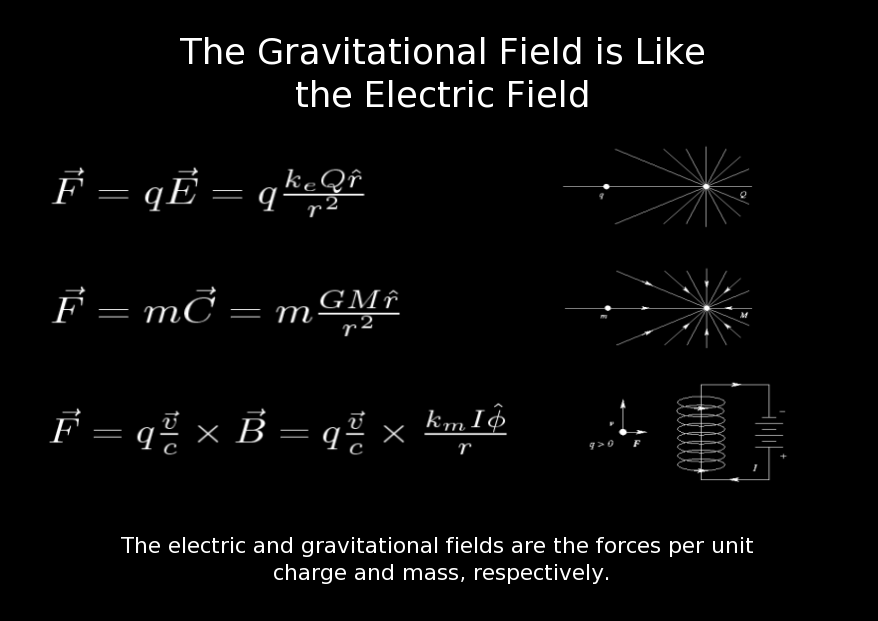










The gravitational field is quite similar to the electric field. Both produce forces proportional to the two "charges" involved that diminish with the square of the distance between the "charges". The charges for the electric field are electrical charges and the charge for the gravitational field is mass. Both fields specify the force per unit "charge" for their types of charge. The analogy extends further. Although the magnetic field appears to be an independent phenomenon, it is actually a consequence of relativity applied to the electric field in the presence of moving charges. The gravitational field produces a similar gravitomagnetic field associated with moving masses. The gravitomagnetic field produces frame-dragging effects as well as other phenomena. The gravitomagnetic and gravitational fields also interact to produce gravitational radiation, i.e. gravitons, just as the electric and magnetic fields interact to produce electromagnetic radiation, i.e. photons or light.
However, despite the similarities, there are also important differences between the 2 fields. One difference is that the gravitational field is much weaker than the electric field. Another difference is that there are 2 types of charge for the electric field but only one type of charge for the gravitational field. Most importantly, like electrical charges repel each other whereas gravitational charges attract. This last difference torpedoed early attempts to create a relativistic theory of gravity based on masses moving in flat space under special relativity. (See Robert M. Wald, "Space, Time, and Gravity: The Theory of the Big Bang and Black Holes", University of Chicago Press, 1977, pp. 31-2.)
I am the author of the images and text except where otherwise indicated. Please contact me for permission if you wish to use any of my images or text.
Created on Wednesday 03 May 2006 by Mark A. Martin with KPresenter